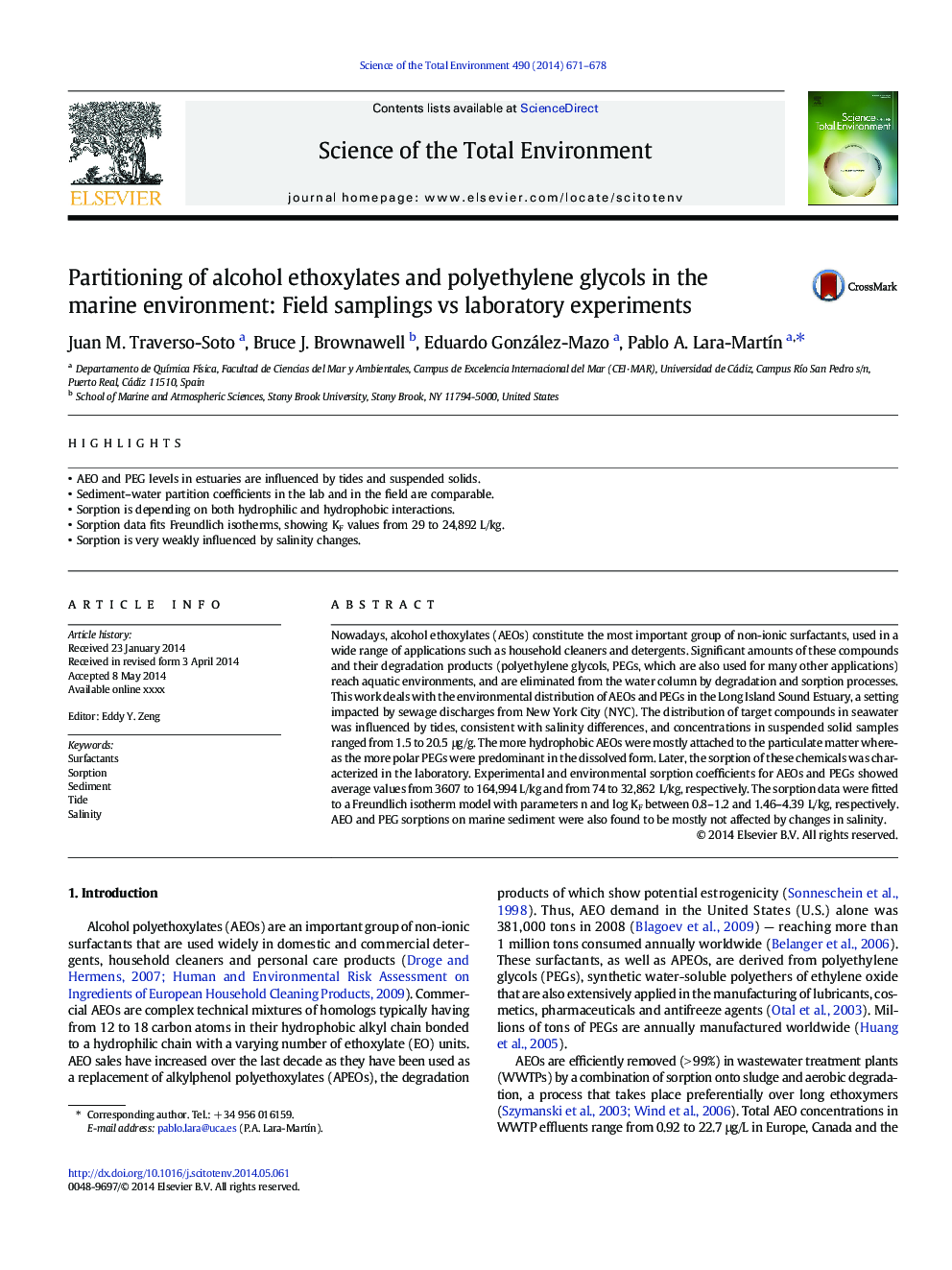| Article ID | Journal | Published Year | Pages | File Type |
|---|---|---|---|---|
| 6329210 | Science of The Total Environment | 2014 | 8 Pages |
Abstract
Nowadays, alcohol ethoxylates (AEOs) constitute the most important group of non-ionic surfactants, used in a wide range of applications such as household cleaners and detergents. Significant amounts of these compounds and their degradation products (polyethylene glycols, PEGs, which are also used for many other applications) reach aquatic environments, and are eliminated from the water column by degradation and sorption processes. This work deals with the environmental distribution of AEOs and PEGs in the Long Island Sound Estuary, a setting impacted by sewage discharges from New York City (NYC). The distribution of target compounds in seawater was influenced by tides, consistent with salinity differences, and concentrations in suspended solid samples ranged from 1.5 to 20.5 μg/g. The more hydrophobic AEOs were mostly attached to the particulate matter whereas the more polar PEGs were predominant in the dissolved form. Later, the sorption of these chemicals was characterized in the laboratory. Experimental and environmental sorption coefficients for AEOs and PEGs showed average values from 3607 to 164,994 L/kg and from 74 to 32,862 L/kg, respectively. The sorption data were fitted to a Freundlich isotherm model with parameters n and log KF between 0.8-1.2 and 1.46-4.39 L/kg, respectively. AEO and PEG sorptions on marine sediment were also found to be mostly not affected by changes in salinity.
Related Topics
Life Sciences
Environmental Science
Environmental Chemistry
Authors
Juan M. Traverso-Soto, Bruce J. Brownawell, Eduardo González-Mazo, Pablo A. Lara-MartÃn,
